Home
/
Carpet World Blog - Weft Carpets
/
How do seven contemporary artists interpret their work with tapestry?

How do seven contemporary artists interpret their work with tapestry?
"Besides cave paintings, tapestry was among the first objects that conveyed meaning," Anni Albers
Annie Albers, the American textile artist, is credited with breaking the line between traditional crafts and art. Many consider her the godmother of textile arts, which she learned from her weaver teachers in ancient Peru. spread all over the world.
Weaving has been used in many cultures for functional, decorative, spiritual, and expressive purposes. The highly developed textile culture emerged in ancient Peru due to several reasons, including the absence of written language. In the Middle East, textiles were often believed to possess magical properties ( the flying carpet tales ).
These days, the masses have accepted textile artists and more and more institutions want to display their works that work in several directions, including referring to political conditions and expressing the harsh conditions produced by conflicts, or to raise issues of identity! However, there remains a sense of resentment on the part of the weavers due to the slow pace of their work affecting the abundance of their production, which led to the fact that few have the desire alone to trade in this unique approach to hand-woven art, we share with you here seven ideas of artists who took us to the limits in this traditional arts.
1. Diederick Brackens

Reading the textiles of Diederick Brackens, whose artwork often revolves around his identity as an African-American man, clearly discerns the blend of diverse West African textile traditions, Flemish textiles, and American quilts in his textiles.
The Los Angeles-based artist draws inspiration from the ability of textiles to tell symbolic and material stories. His textile threads are drawn from folklore, religion, mythical creatures, cosmology, and the artist's personal experiences. His choice of materials adds more appeal to his work, along with the dyes and pigments he uses, such as Tea to color cotton textiles, which in their symbolism refers to the slave trade.
Diederick Brackens has a nuanced way of describing the intertwining of social, political, and personal issues through a medium (textiles) that is both contemporary and traditional. The artist's textiles are receiving attention, with Brackens winning the 2018 Joyce Alexander Wein Prize presented by the Studio Museum in Harlem.
2. Erin M. Reilly
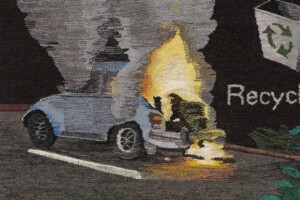
The furnishings by Brooklyn-based Erin M. Reilly capture the pace, dynamism, and stillness of contemporary female life, as the artist's signature renderings emerge in woven images of her personal portrayal of women.
Riley grew up on the Internet, and the tapestries reflect her personal experience as a "geeky human being who grew up in chat rooms and conversations" as a way to explore life as well as human trauma. It is slow, and the weaving process allows for a complete disconnection from the Internet with a simple connection to technology.
The nature of the weaving process on the loom allows Riley to focus on enlarging specific details in the piece of weaving, and she also dyes some threads by hand to weave each piece separately as an attempt to slow down the movement of the viewer’s view of the piece of art and dwell on the details more in an attempt to guide the viewer to understand the content to be communicated.
3. Terry Friedman
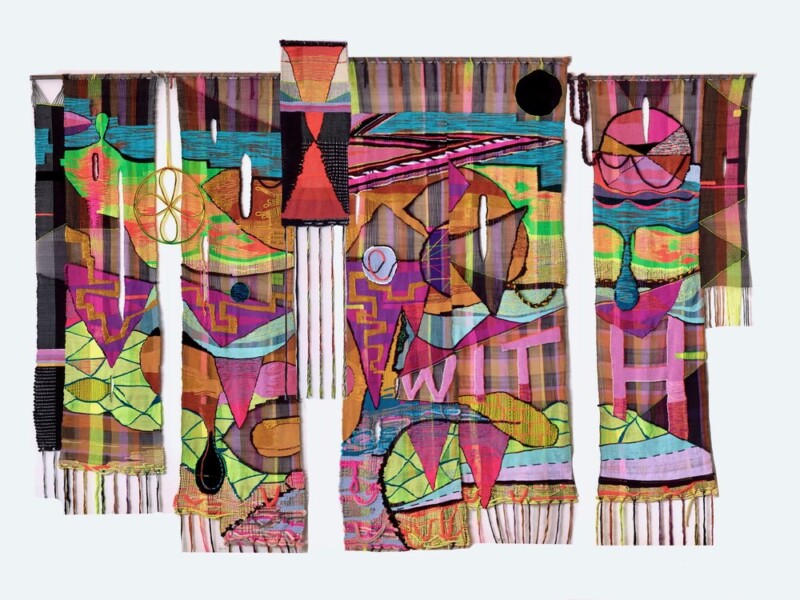
Terry Friedman resides in the Bay Area in San Francisco, and her art was inspired by the Spanish painter Joan Miro.
Friedman's first encounter with weaving was on a trip to Barcelona, and because her interests in weaving began late, Friedman is not only known as a weaver, but prefers to be seen as a multidisciplinary artist.
"I use a weaver or a loom to make my colorful and attractive paintings using texture," she explains, adding that she also uses a drawing board. Instead of finding inspiration in the work of other textile artists, Friedman looks for and is inspired by painters such as Joanne Greenbaum, Kelty Ferris, Nicole Eisenman, and Sarah Cain, especially for their unconventional paintings.
The undulating, uneven patterns of the works Friedman has created in the past five years bear some resemblance to the tangled elegance of the bright, crowded coogee jackets popular in the 1990s, describing them as "unstable and unfamiliar" patterns, qualities that inspire Friedman. "My work does not seek perfection in a sense," she says. traditional craftsmanship, but rather seeks passion and story-telling in an abstract way.”
4. Brent Wadden
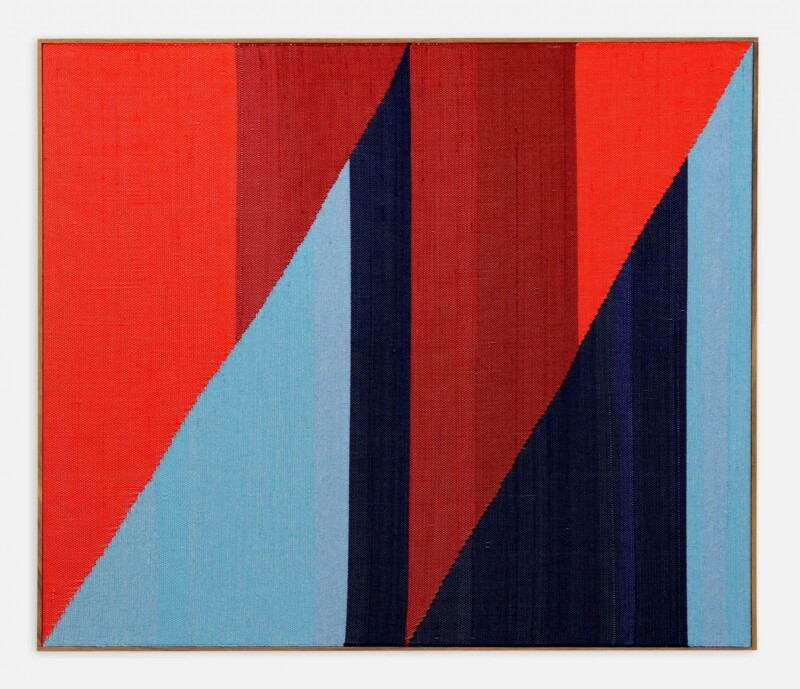
Most of Brent Wadden's engineering works - despite their similarities to "color field" painting, which is an abstract painting style - consist of woven panels sewn together and stretched over wooden frames. Wadden studied painting when he was a university student before teaching himself how to weave, but He remained true to the art of drawing and the abstract gestures that dominated the paintings of the great painters of the mid-century.
Brent was influenced by traditional folk art in the Canadian province of Nova Scotia, where he grew up, and this artist is distinguished by the "honesty" that he tries to show in his practice, so Waden focused his attention mainly on the lack of affectation in addressing the errors that occur continuously in his paintings as he is a weaver who taught himself By himself, for example, if he runs out of certain threads, he uses others, which leads to a difference in color shades!
5. Aiko Tezuka

Artist Aiko Tezuka prefers to make the structure of the materials used in her tapestry work transparent, weaving them as if ornate folk fabrics melt into a jumble of loose colored threads that run the length of the wall or the length of the floor.
Tezuka has taken an academic interest in this idea. She explored it in her doctoral dissertation, which she received from Kyoto City University of the Arts in 2005. Although Tezuka lives in Berlin, her Japanese background helped her with this thesis. Tezuka also explained that boundaries were created. Between painting, weaving and embroidery In the late nineteenth century in Japan, when the ports of the isolated country were made available to the rest of the world, and to accelerate the process of opening up, Japanese artists began to reproduce European culture, including giving priority to painting over crafts, and Tezuka works to transcend these boundaries in her latest work .
6. Josh Fout
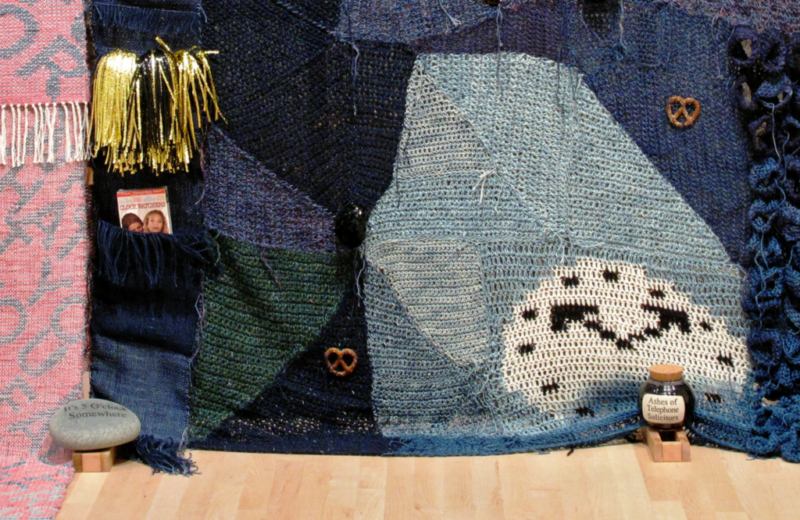
San Francisco-based Josh Vaught delights in the messy, intricate possibilities of weaving. He employs a range of materials in his textiles, turning them into collages ranging from cotton to old toys to cultural waste like VHS tapes and nail polish; and archival materials.
Josh Vaught, Associate Professor and Chair of the Department of Textiles at California College of the Arts, is enthusiastic about the expansion of the traditional definition of textile, saying, “Textiles have always been a tool through which we can share and celebrate stories and experiences that have been marginalized through the subjugation of lost threads,” and how can we Exploiting these experiences by understanding textile not only as an artistic object or subject, but as a tool, a piece of cloth, and a space for display.
7. Julia Bland
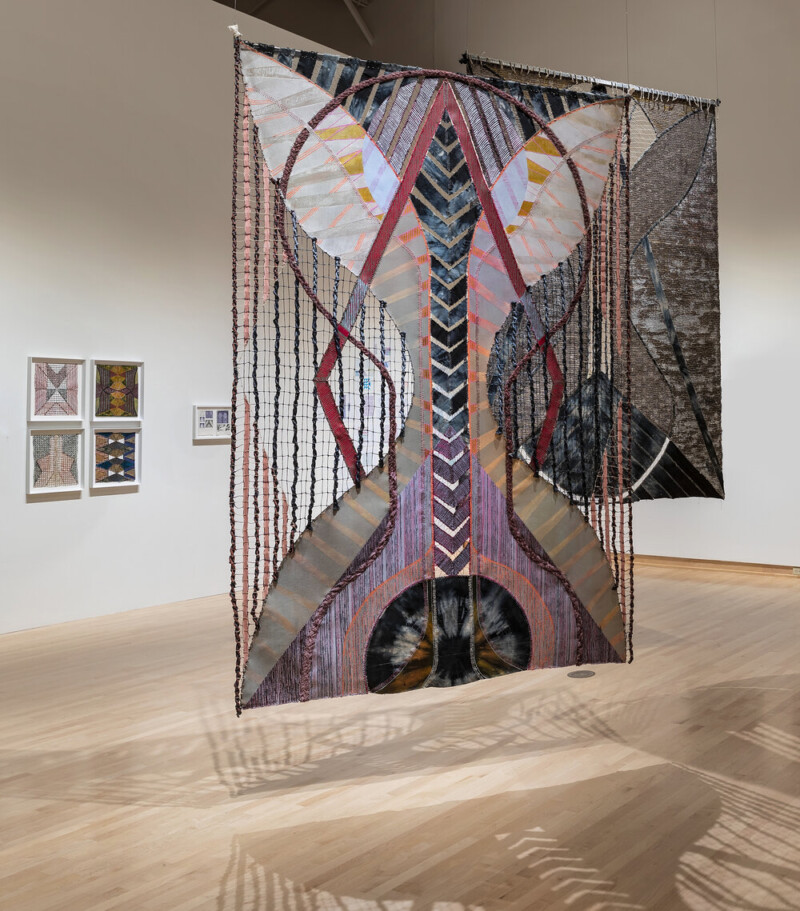
Wall works by artist Julia Bland blurred the distinctions between tapestry art and painting, in which textiles are placed at looms and painted with oil; Pieces of cloth and fabrics such as silk, wool, and velvet are woven or sewn together, and hand-knotted threads are threaded through intricate structures, often squares of about 2 m in length.
Brooklyn-based Bland describes her blending of painting and hand-woven textiles as "a series of events that combine and dissolve, ultimately impossible to analyze exactly what happened or how, what happened first or what happened last."
Although Bland asserts that the images and patterns in her work arise from an imprecise process with the materials she uses, the colorful and intricate works always appear to be arranged in symmetrical geometric structures.
“This is the history of tapestry that is so rich, so big, so deep,” Bland says, that the artist finds it hard to get around. Tapestry can be a way of combining, of indicating, of contradicting, of breaking, of mending, of contracting, of expanding. History is rich and vast, but we don’t have to live it. Again, we can create completely different things."
Translated by: artsy.net
Share
I’m overjoyed to share my incredible experience with NetGuard Network, a reputable and expert recovery service that helped me reclaim a substantial portion of my lost funds. After falling victim to a deceitful investment company, I felt helpless and unsure of where to turn. However, NetGuard Network’s exceptional professionalism and expertise made all the difference. They approached my case with diligence and care, ultimately recovering a substantial amount of my lost funds.
I highly recommend NetGuard Network to anyone who’s been through a similar ordeal. Their team is trustworthy, reliable, and dedicated to helping their clients. They provided me with regular updates throughout the process and maintained complete transparency. If you’re in need of recovery services, I strongly advise you to reach out to NetGuard Network via email at netguardnetwork@gmail.com or visit their website for more information. They’re a legitimate and professional service that genuinely cares about their clients.
I’m overjoyed to share my incredible experience with NetGuard Network, a reputable and expert recovery service that helped me reclaim a substantial portion of my lost funds. After falling victim to a deceitful investment company, I felt helpless and unsure of where to turn. However, NetGuard Network’s exceptional professionalism and expertise made all the difference. They approached my case with diligence and care, ultimately recovering a substantial amount of my lost funds.
I highly recommend NetGuard Network to anyone who’s been through a similar ordeal. Their team is trustworthy, reliable, and dedicated to helping their clients. They provided me with regular updates throughout the process and maintained complete transparency. If you’re in need of recovery services, I strongly advise you to reach out to NetGuard Network via email at netguardnetwork@gmail.com or visit their website for more information. They’re a legitimate and professional service that genuinely cares about their clients.
I’m sharing my experience to you on how I won the lottery, you can win the lottery fast and reliable in wherever you are in the world, Dr Lucas is a God sent, I saw so many testimonials online on how he helped people won different kinds of lottery, I never believed so I had to contact him to be sure if he’s real and genuine, to my greatest surprise he helped me won the 70 million Lotto Max Jackpot in Canada, I’m Mitchel Dyck, I regularly buy the lottery tickets whenever I go to fill my truck almost all the time, Dr Lucas told me what I needed to do as he cast my spell which i followed without any mistakes, he gave me the numbers on the 2nd day of the spell and directed me on how to play and I really won with the numbers he gave me, I can’t explain all of my experience with Dr Lucas, you can review about my winnings online then give Dr Lucas a try and watch how you will win, Email him on Drlucasspelltemple@gmail.com or WhatsApp him on +234 904 794 3567 You’ll never regret contacting Dr Lucas .
I’m sharing my experience to you on how I won the lottery, you can win the lottery fast and reliable in wherever you are in the world, Dr Lucas is a God sent, I saw so many testimonials online on how he helped people won different kinds of lottery, I never believed so I had to contact him to be sure if he’s real and genuine, to my greatest surprise he helped me won the 70 million Lotto Max Jackpot in Canada, I’m Mitchel Dyck, I regularly buy the lottery tickets whenever I go to fill my truck almost all the time, Dr Lucas told me what I needed to do as he cast my spell which i followed without any mistakes, he gave me the numbers on the 2nd day of the spell and directed me on how to play and I really won with the numbers he gave me, I can’t explain all of my experience with Dr Lucas, you can review about my winnings online then give Dr Lucas a try and watch how you will win, Email him on Drlucasspelltemple@gmail. com or WhatsApp him on +234 904 794 3567 You’ll never regret contacting Dr Lucas
How To Hire The Best Crypto Recovery Expert Lost Recovery Masters
Lost Recovery Masters performed an excellent operation to free my funds that had been deceitfully obtained through scams from dishonest crooks. Their prompt action and unflinching support of my case have given those priceless funds which had looked gone forever a second chance…I sincerely appreciate all of the members of the Lost Recovery Masters team for their professionalism, hard work, and perseverance during this process.
You can get in touch with them through their website
(https://lostrecoverymasters.com/), their WhatsApp (+44(753)710-5921)) or their support email (Support@lostrecoverymasters.com).



























